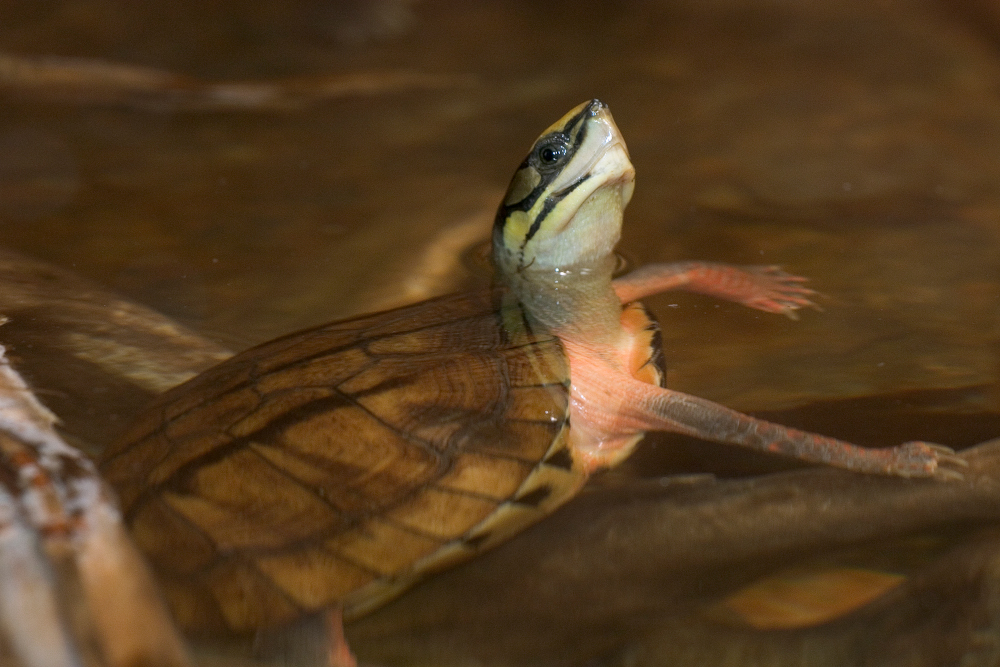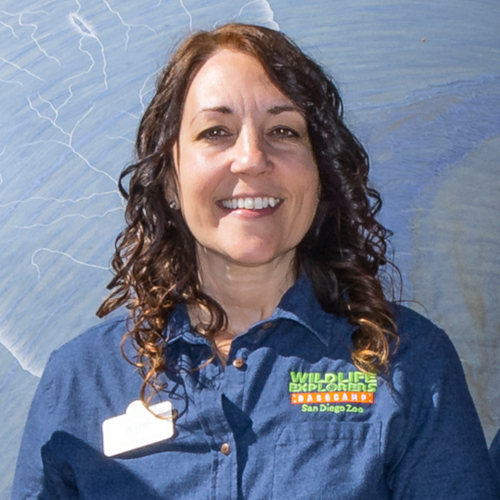Species name:
Chinese three-striped box turtle (Cuora trifasciata)
Description:
Chinese three-striped box turtles are quite colorful, of relatively small size (about three-quarters the size of a football), with a yellow head and three dark stripes running the length of the shell.
Their habitats include freshwater ecosystems and surrounding tropical and subtropical forests, and they’re omnivorous, eating a variety of invertebrates, small frogs and fish, with some fruits and mushrooms.
Females usually lay 1-3 eggs per clutch and can lay 1-2 times per year.

Where it’s found:
Smaller creeks and river tributaries throughout more densely forested habitat on the island of Hainan, as well as Hong Kong. It is extirpated from the mainland provinces of Guangdong, Guangxi and Fujian.
IUCN Red List status:
Critically endangered. It is one of the most endangered turtle species in the world, according to a 2003 assessment by the IUCN, and remains listed among the Turtle Conservation Coalition’s 25 most endangered tortoises and freshwater turtles.
Major threats:
Unsustainable harvest for use in traditional folk medicines, including a Chinese medicinal dessert, has pushed this species toward extinction. The pet trade and habitat destruction are the other primary threats to the species, often a target of illicit wildlife trade.
My favorite experience:
I’m passionate about helping to combat the illegal trade in wildlife. This led to San Diego Zoo’s involvement in helping rescue confiscated wildlife, and in particular turtles. The group of turtles from the genus Cuora, which includes this turtle, are some of the most highly sought after and most frequently smuggled turtles. It has been very rewarding to be able to work with our partner agencies to help combat wildlife trafficking, in part by collaborating when confiscations occur and animals are rescued from the trade. We can place the turtles here at the San Diego Zoo or send our experienced staff to the field to help provide triage care and rehabilitate the animals.
We also conduct education and outreach to help reduce the demand for these species. We partner with the Wildlife Trafficking Alliance, are an active member of the Southern California Confiscations Network, and support other turtle conservation organizations such as the AZA-accredited Turtle Survival Alliance.
One day, if demand goes down, I hope not to have the need to help as much. Until then some of my most meaningful time caring for wildlife comes from helping animals who have been part of confiscations.
What else do we need to understand or do to protect this species?
We need more fieldwork and monitoring of remaining populations in the wild in China, along with more regional protections of habitats and long-term critical protected areas with stronger enforcement. We also need to implement best care practices for confiscated turtles and repatriation methods — plans to safely return them to the wild when possible.
Lastly, better understanding the turtle’s genetic diversity is critical for us to help zoo populations form assurance colonies. These can act as source populations for wild reintroductions — if their habitats are preserved.
Previously in The Revelator:
A Virus Wiped Out 90% of This Turtle Species. Can It Recover?


